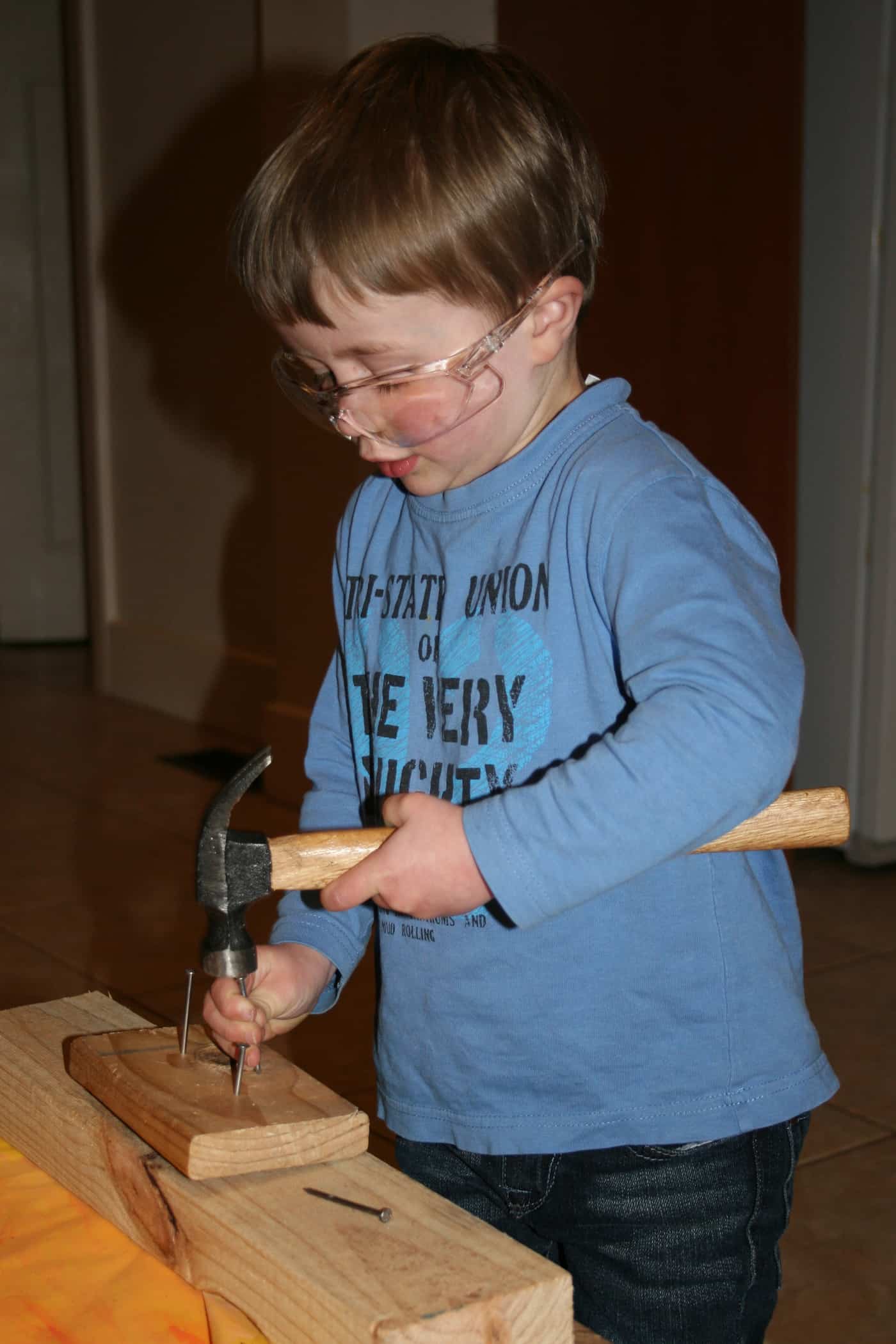Recently a colleague of mine expressed regret that occupational health and safety in Australia is no longer occupational. Occupational health and safety (OHS) established its parameters in its title but now most of Australia is bound to Work Health and Safety laws. Work is more than a workplace and so the discipline, the OHS profession, became more complex. Some would say that it has always been complex and that many OHS professionals failed to see the bigger picture, the broad social context of workplace health and safety.
 I was reminded of my colleague’s regrets when someone on a construction site recently asked for my opinion on some pictures of her son, at a childcare centre, hitting some nails into a block of wood. The boy (pictured right, at home) was wearing safety glasses, albeit a little large; the “work area” was separated from the rest of the children and the boy was supervised at all times by a child care worker. I was told that some of the parents had expressed concern that such an activity should not be happening in a childcare centre due to the potential risk to other children.
I was reminded of my colleague’s regrets when someone on a construction site recently asked for my opinion on some pictures of her son, at a childcare centre, hitting some nails into a block of wood. The boy (pictured right, at home) was wearing safety glasses, albeit a little large; the “work area” was separated from the rest of the children and the boy was supervised at all times by a child care worker. I was told that some of the parents had expressed concern that such an activity should not be happening in a childcare centre due to the potential risk to other children.
Continue reading “One is never too young to learn about safety but we may be too old to change”
